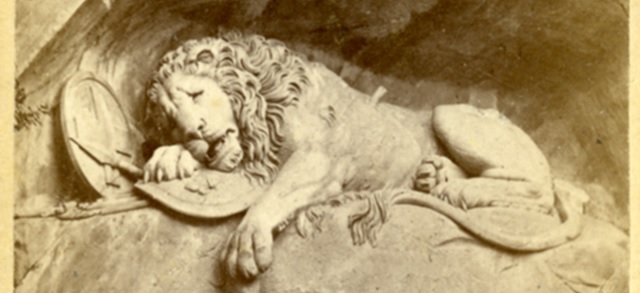
Monuments Class Projects
Architect/Sculptor of Monument
Karl Friedrich Schinkel (1781-1841)
Preview

Medium
photograph, carte-de-viste
Keywords
Berlin, Germany, Prussian Wars of Liberation, Prussian National Monument for Liberation, Friedrichshain-Kreuzberg, Karl Friedrich Schinkel, Napoleonic Wars, Frederick William III, Alexander I of Russia
Physical Dimensions
4 x 2 1/2 "
Date of Publication
c. 1860-1880
Name of Monument
Prussian National Monument for Liberation Wars
Date of Completion or Dedication of Monument
6-1826
City of Monument
Berlin
Location within City
Viktoriapark
State/Province of Monument
Berlin
Country of Monument
Germany
Description
The Prussian National Monument for Liberation Wars in Berlin commemorates the struggle of Prussia against Napoleonic Rule from 1813 to 1815, symbolizing its military victory and German national identity. Prussian King Frederick William III (reigned 1797-1840) commissioned the monument to commemorate the victory against France. Designed by Karl Friedrich Schinkel (1781-1841), the monument is Romantic Neo-Gothic in style, featuring a spire with many pointed arches and pinnacles, as well as statues and inscriptions that honor and commemorate Prussian royalty and military leaders. Despite wartime damage and political shifts, the monument remains an emblem of unity and resilience for Germany.
School of Art/Architecture
Gothic Revival
Publisher
Unknown
Digital Date
2-7-2025
Copyright
Physical copy of the cate-de-viste is in the public domain. Digital copy scanned by Rod Library ©2025 Rod Library, University of Northern Iowa.
Creative Commons License

This work is licensed under a Creative Commons Attribution-NonCommercial 4.0 International License
File Format
image/jpeg



Comments
The Prussian National Monument for Liberation Wars was built to help commemorate the struggle for freedom from the rule of Napoleon Bonaparte and France. From April to October 1813, Napoleon's army tried to take over what is now known as Germany. During this time, Germany was not yet unified, being composed of many small principalities and kingdoms, including Prussia. Led by Prussia and Austria, and with the help of Russia, Sweden, and many others, the Germans pushed back against the French.
After the war was over, the King of Prussia, Frederick William III, decided to commemorate this victory with a monument to the bravery and resilience that was shown throughout the war. For the creation of this monument, the king commissioned Karl Friedrich Schinkel, a well-renowned architect and city planner, to create the monument After drawing plans, Schinkel had the pieces and statues cast in June 1818. The land for the monument was purchased from a group of farmers for 1,500 thaler. The area that the monument sits upon is a hill that was called Götze'scher Berg during this time. Now called Kruezburg, it sits in the middle of the city in a park.
The monument contains many different features that are present in other Gothic Revival structures, including pointed edges on the many columns that come from the base of the monument. It now stands at 88 feet tall, having been raised in 1880 from 62 feet tall. The entire monument is atop a three-tiered octagon-style base, built with large stone bricks to help elevate it. A staircase protrudes from the octagon. T
he actual monument itself is completely made of cast iron, chosen because of its durability and longevity. Around the monument, there are eight cast iron spires with an iron fence in between them. Going from bottom to top, there are many interesting features to this monument. On the bottom level of the monument, there is one plaque on the eastern side with a message from the king to the people, which reads: "The King to the People, which at his call magnanimously offered its wealth and blood for the Fatherland, to the Fallen in memoriam, to the Living with acknowledgement, to Future Generations for emulation." This dedication was written by August Boeckh, a member of the Prussian Academy of Sciences. On the level above the dedication, there is a group of twelve statues, all commemorating battles that took place during the liberation wars: Battle of Nations at Leipzig, Dennewitz, Culm, Großgörschen/Lützen, Katzbach near Wahlstatt, Großbeeren, Laon, Bar-sur-Aube, Paris, f La Rothuère, Wartenburg, and finally, La Belle Alliance or Waterloo, These battles were major victories for the Prussians. The statues are designed after Greek, Nordic, and Prussian characters showing great strength and power. Their faces represents Prussian nobility at the time, except for one, which is Czar Alexander I. The rest include the king's brothers, two children, wife, counts or princes who commanded in the field, and soldiers who died fighting for Prussia. At the top of the Gothic spire is a Greek Cross, with equal arms.